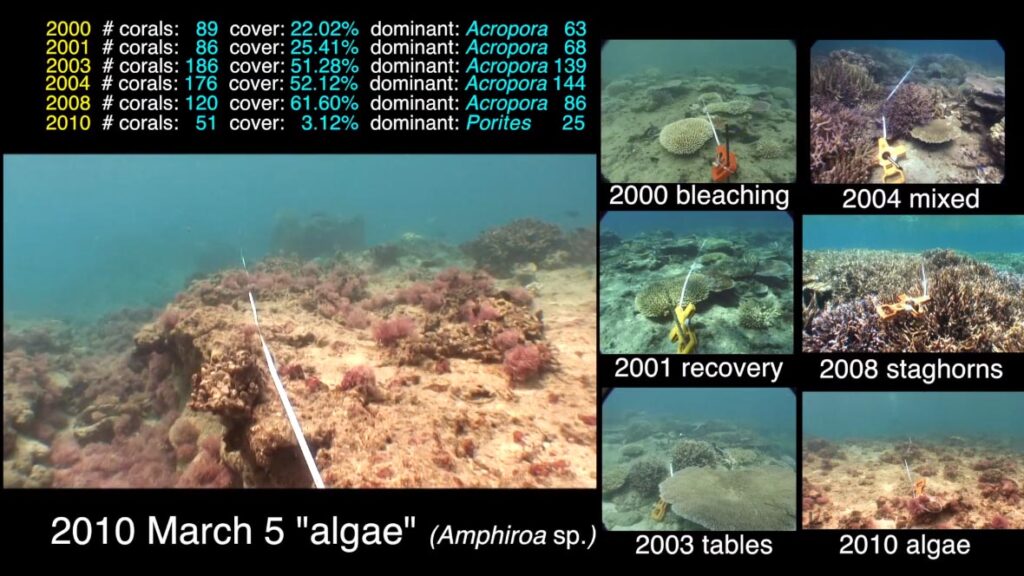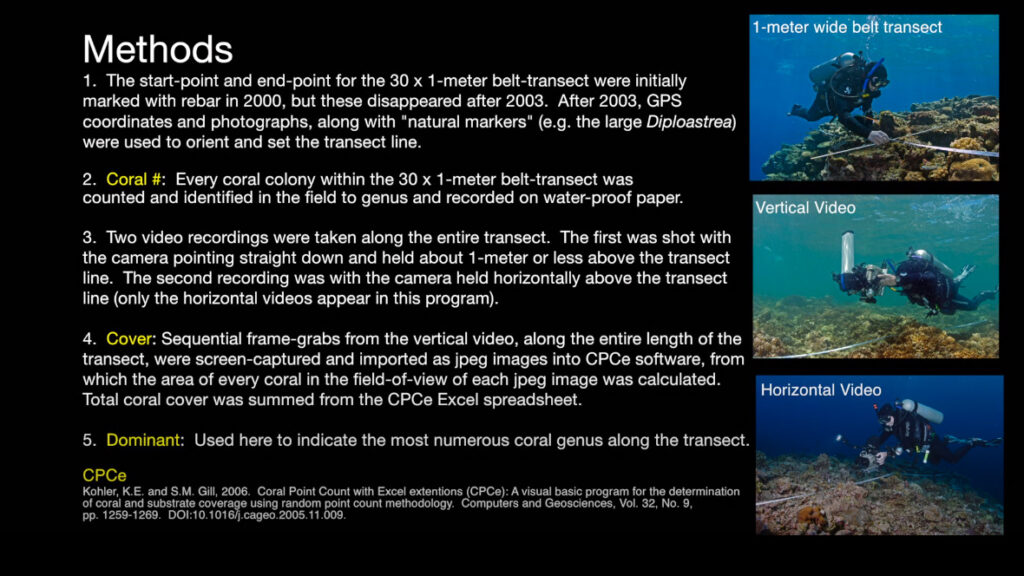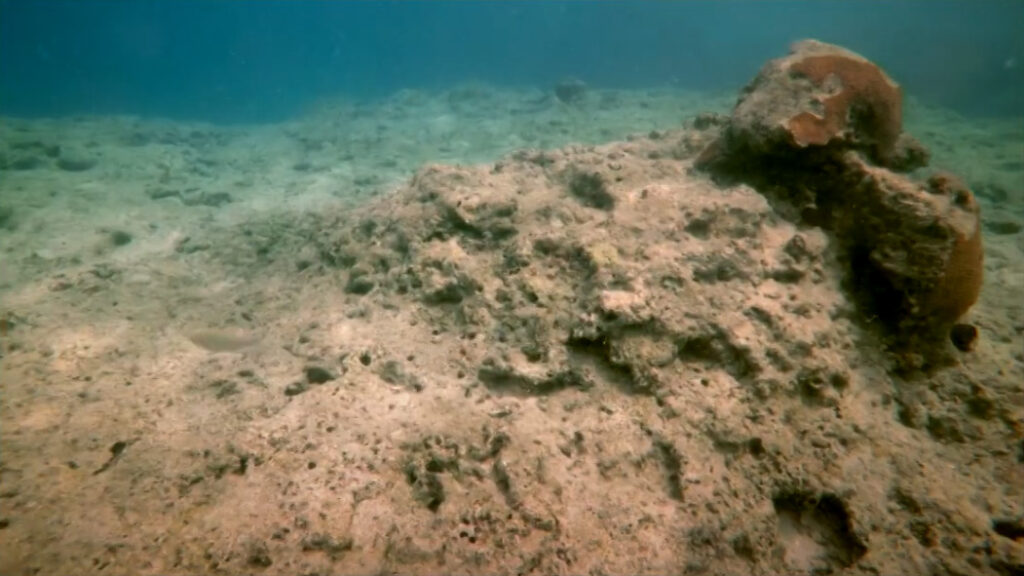
Marine biologist Dr. Bruce Carlson and partner Marjorie “Marj” Awai have published new video-based documentation showing years of dramatic change on Fijian coral reefs. “[We] collected data in Fiji on this fringing reef at Vunavadra Island (and others) over a 16-year period. We were always amazed at the changes from one visit to the next, but totally unprepared for 2010 and 2016.” (Carlson is the former Director of the Waikiki Aquarium and a former Peace Corps Volunteer in Fiji.)
The video starts with a coral bleaching event that occurred in 2000 at Vanavandra Island. This year, and each year that follows, the team conducted video transects, recording the same area of the reef in vertical and horizontal perspectives to calculate coral cover and overall population.

Carlson and Awai return in 2001 to record the recovery of the reef following the bleaching event. 2003’s video showed a large increase in coral population and cover. The survey from 2004 starts to document the evolution of the coral population and a shift in coral type that continued in the subsequent 2008 sample.

In a stunning turn of events, storm damage and flooding obliterate the reef in the 2010 visit. Algae is somewhat abundant, and coral cover is at an all-time low. Hoping to experience another reef recovery, Cyclone Winston has other plans in 2016. Winston, cite as “the most intense tropical cyclone in the Southern Hemisphere on record,” leaves the reef scoured bare, apparently destroying even massive, bolder-sized corals that served as waypoints along prior year’s transects.
“Ultimately, it is a visual depiction of our worst fears for all coral reefs facing future threats of more frequent and severe storms and bleaching events,” wrote Carlson.

In the video, Carlson suggests that perhaps, in the absence of bleaching events or other weather events, the reef could perhaps return to its coral garden state with an 8-10 year respite. He continues, pondering whether an intentional coral restoration effort could significantly shorten his predicted timeframe for recovery.
“We mention that this reef could be a candidate for a coral restoration project, but this suggestion might be controversial because this shallow reef is susceptible to catastrophic storm events. Is the effort of restoration worth the time and cost? Conversely, one could argue that knowing the original diversity and density of corals on this reef could validate a restoration effort, especially if the selection of new corals approximates the original diversity. Moreover, restoration efforts would give the corals a head-start of a year or two to reach maturity and reproduce, which might become a critical factor if the frequency of storms and bleaching events increase in coming years.
“What has happened to Vunavadra since 2016 is unknown to us. Returning to Fiji has been problematic, especially with recent COVID travel restrictions. Someday we hope to return and re-evaluate the Vunavadra transect and seven more transects on other Fiji reefs.
“This video will not win any awards for production quality,” concludes Carlson, “but we hope these old videos will be of value as a teaching tool about patterns and processes on coral reefs.”
Watch the life, death, and uncertain future of Vunavadra’s fringing reef, from 2000 to 2016




